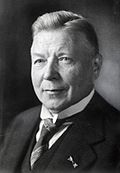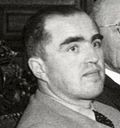
The Anti-Revolutionary Party was a Protestant conservative and Christian democratic political party in the Netherlands. The party was founded in 1879 by Abraham Kuyper, a neo-Calvinist theologian and minister. In 1980 the party merged with the Catholic People's Party (KVP) and the Christian Historical Union (CHU) to form the Christian Democratic Appeal (CDA).

The Christian Historical Union was a Protestant Christian democratic political party in the Netherlands. The CHU is one of the predecessors of the Christian Democratic Appeal (CDA), into which it merged in September 1980.

Hendrikus "Hendrik" Colijn was a Dutch politician of the Anti-Revolutionary Party. He served as Prime Minister of the Netherlands from 4 August 1925 until 8 March 1926, and from 26 May 1933 until 10 August 1939.

The Third Drees cabinet, also called the Fourth Drees cabinet, was the executive branch of the Dutch Government from 13 October 1956 until 22 December 1958. The cabinet was a continuation of the previous Second Drees cabinet and was formed by the social-democratic Labour Party (PvdA) and the christian-democratic Catholic People's Party (KVP), Anti-Revolutionary Party (ARP) and the Christian Historical Union (CHU) after the election of 1956. The cabinet was a Centre-left grand coalition and had a substantial majority in the House of Representatives, with Labour Leader Willem Drees serving as Prime Minister. Prominent KVP politician Teun Struycken served as Deputy Prime Minister and Minister of the Interior, Property and Public Organisations.

This article gives an overview of Christian democracy in the Netherlands, which is also called confessionalism, including political Catholicism and Protestantism. It is limited to Christian democratic parties with substantial support, mainly proved by having had a representation in parliament. The sign ⇒ means a reference to another party in that scheme.
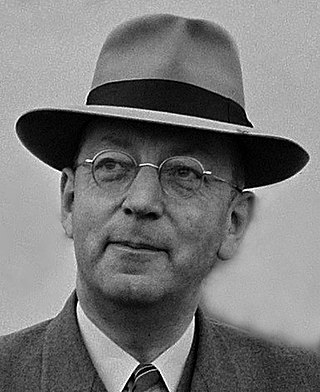
Johannes Henricus "Johan" van Maarseveen was a Dutch politician of the defunct Roman Catholic State Party (RKSP) and later the Catholic People's Party (KVP) now merged into the Christian Democratic Appeal (CDA) party and jurist.
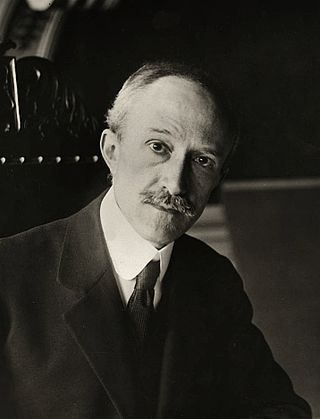
Jacob Adriaan Nicolaas Patijn was an unaffiliated liberal Dutch politician who was Minister of Foreign Affairs from October 1, 1937 until August 12, 1939.
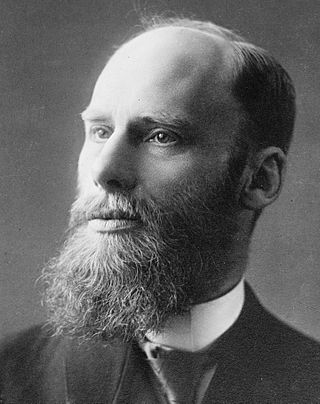
Jan Rudolph Slotemaker de Bruïne was a Dutch politician of the defunct Christian Historical Union (CHU) party now merged into the Christian Democratic Appeal (CDA) party and theologian.
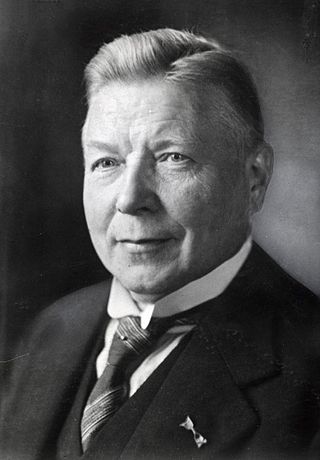
Jacob Adriaan de Wilde was a Dutch politician of the defunct Anti-Revolutionary Party (ARP) now merged into the Christian Democratic Appeal (CDA) party and jurist.

The Second De Geer cabinet, also called the First London cabinet, was the cabinet of the Netherlands from 10 August 1939 until 3 September 1940. The cabinet was formed by the political parties Roman Catholic State Party (RKSP), Social Democratic Workers' Party (SDAP), Anti-Revolutionary Party (ARP), Christian Historical Union (CHU) and the Free-thinking Democratic League (VDB) following the dismissal of the Fifth Colijn cabinet by Queen Wilhelmina on 27 July 1939. The national unity government became a War cabinet on 14 May 1940 following the German invasion and fled to London. The government-in-exile was dismissed by Queen Wilhelmina on 26 August 1940.

The Fifth Colijn cabinet was the cabinet of the Netherlands from 25 July 1939 until 10 August 1939. The cabinet was formed by the political parties Anti-Revolutionary Party (ARP), Christian Historical Union (CHU) and the Liberal State Party (LSP) following the fall of the Fourth Colijn cabinet on 29 June 1939. The right-wing cabinet was a minority government in the House of Representatives. It was the last of five cabinets of Hendrikus Colijn, the Leader of the Anti-Revolutionary Party as Prime Minister. The cabinet was dismissed by Queen Wilhelmina on 27 July 1939, just two days after it took office.

The Third Colijn cabinet was the cabinet of the Netherlands from 31 July 1935 until 24 June 1937. The cabinet was formed by the political parties Roman Catholic State Party (RKSP), Anti-Revolutionary Party (ARP), Christian Historical Union (CHU), Liberal State Party (LSP) and the Free-thinking Democratic League (VDB) after the resignation of the Second Colijn cabinet on 23 July 1935. The centre-right cabinet was a majority government in the House of Representatives and was a continuation of the previous Cabinet Colijn II. It was the third of five cabinets of Hendrikus Colijn, the Leader of the Anti-Revolutionary Party as Prime Minister.

The Second Colijn cabinet was the cabinet of the Netherlands from 26 May 1933 until 31 July 1935. The cabinet was formed by the political parties Roman Catholic State Party (RKSP), Anti-Revolutionary Party (ARP), Christian Historical Union (CHU), Liberal State Party (LSP) and the Free-thinking Democratic League (VDB) after the election of 1933. The centre-right cabinet was a majority government in the House of Representatives. It was the second of five cabinets of Hendrikus Colijn, the Leader of the Anti-Revolutionary Party as Prime Minister.
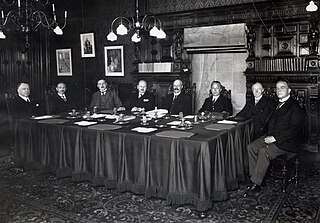
The Third Ruijs de Beerenbrouck cabinet was the cabinet of the Netherlands from 10 August 1929 until 26 May 1933. The cabinet was formed by the political parties Roman Catholic State Party (RKSP), Anti-Revolutionary Party (ARP) and the Christian Historical Union (CHU) after the election of 1929. The centre-right cabinet was a majority government in the House of Representatives. It was the last of three cabinets of Charles Ruijs de Beerenbrouck, the Leader of the Roman Catholic State Party as Prime Minister.

The First De Geer cabinet was the cabinet of the Netherlands from 8 March 1926 until 10 August 1929. The cabinet was formed by the political parties Roman Catholic State Party (RKSP), Anti-Revolutionary Party (ARP) and the Christian Historical Union (CHU) following the fall of the First Colijn cabinet on 11 November 1925.

The First Colijn cabinet was the cabinet of the Netherlands from 4 August 1925 until 8 March 1926. The cabinet was formed by the political parties Roman Catholic State Party (RKSP), Anti-Revolutionary Party (ARP) and the Christian Historical Union (CHU) after the election of 1925. The centre-right cabinet was a majority government in the House of Representatives. It was the first of five cabinets of Hendrikus Colijn, the Leader of the Anti-Revolutionary Party as Prime Minister.

The Theo Heemskerk cabinet was the cabinet of the Netherlands from 12 February 1908 until 29 August 1913. The cabinet was formed by the political party Anti-Revolutionary Party (ARP) and the General League of Roman Catholic Caucuses (ABRK) following the fall of the De Meester cabinet 21 December 1907. The centre-right cabinet was a minority government in the House of Representatives but was supported by Independent Catholics and Independent Protestants for a majority. After the election of 1909 the Anti-Revolutionary Party and the General League of Roman Catholic Caucuses received a plurality of the votes and the cabinet could continued to govern as a majority government from 27 July 1909. Theo Heemskerk of the Anti-Revolutionary Party was Prime Minister.
De Standaard was a Dutch daily newspaper published from 1872 to 1944. It was started by Abraham Kuyper, who was the founding editor, and served as an organ of the Anti-Revolutionary Party. Hendrikus Colijn served as editor from 1922 to 1939.





